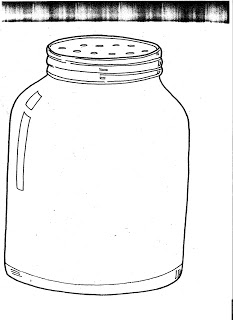Title: Parts
By
Tedd Arnold
To purchase this book from Amazon, click here!
Objectives: Rhyming, poetry, sequencing, comprehension,
creativity, fluency, human body
Grade(s): Any Grade
Possible Materials
Needed: Camera, writing utensils, computers, chalk, or other materials.
Brief
Description: Parts is a poem in a book.
Therefore, you can use this book for teaching poetry and/or
rhyming. It is also a great book to get
older students/children out of their comfort zone, and present the book as if
they were the little boy “loosing” his parts (see Drama Integration Activity).
Lesson:
1.
HOOK:
(Get the students interested). Begin by reading the book in a dramatic way to
the students (even older students). Read
it as if you were the main character.
Most likely students will think you are funny!
Choose
one or more from the following activities:
2.
Media Art/Technology
Activity:
This activity can be done as a whole class, in groups, or as individual
projects for older kids. It can be
incorporated when teaching sequencing, creativity, comprehension, or many other
things depending on how you use it. The
activity: for each page of the book, take a creative picture of what the page
is saying. For example: On the second
page the main character’s hair falls out in his comb. You or your students depending on how you set
the activity up-take a picture of someone holding a comb with hair in it. After all the pictures are taken, you can
have the kids put them in order for a sequencing activity. If you did groups, you could have the
students present their group media arts project about the book with the
pictures. There is a lot you could do
with the pictures.
I
actually did this activity with my class when I was teaching 3rd
grade. We did it to feature this book
because it is one of my favorite books, and it is the book my students voted for
to feature. We did this as a class, and
students took turns being in the pictures.
(I took the pictures). When we
were all done, we put the pictures on our classroom door, with a sign that
said- “Can you guess the book?” The
students loved it, and it made them more excited to read other books. Here are some of the examples of pictures I
took. (The kids were creative, and they
chose what to do for the picture).
3.
Drama Integration
Activity:
If you chose to use the “hook” for this book, this activity is exactly that,
but it is what students will do and present.
You can use this book as an introduction/example, and have the students
choose their own books, or you can have students read this book to the class,
you, or in a group. The Activity: have
students read the book in a dramatic way- as if they were the little boy
missing his hair, brain, etc. This is a
good way to help with fluency.
4.
Art/Writing
Integration:
After using this book to teach poetry, have the children write and illustrate
their own poem. You can have younger
children use writing utensils, or have older children create their graphics using
technology: photography, a program like Paint, or other graphics.
5.
Science Integration
Activity: This
is a perfect book to use when teaching about our bodies to little kids. The book has reference to skin, bones, boogers,
body parts (eyes and arm), teeth, and ear wax.
You could focus on any one of these things or all of them when introducing
a unit on the body. Some Art integration
activities when using this book to teach the body is: self-portraits, skeleton
bodies, or go outside with chalk and trace students’ bodies. Let them draw their own face and clothes.
At Home Ideas: Any of the above
ideas can easily be done at home with a little adaptation. Some may even be easier to do at home than in
a classroom.










